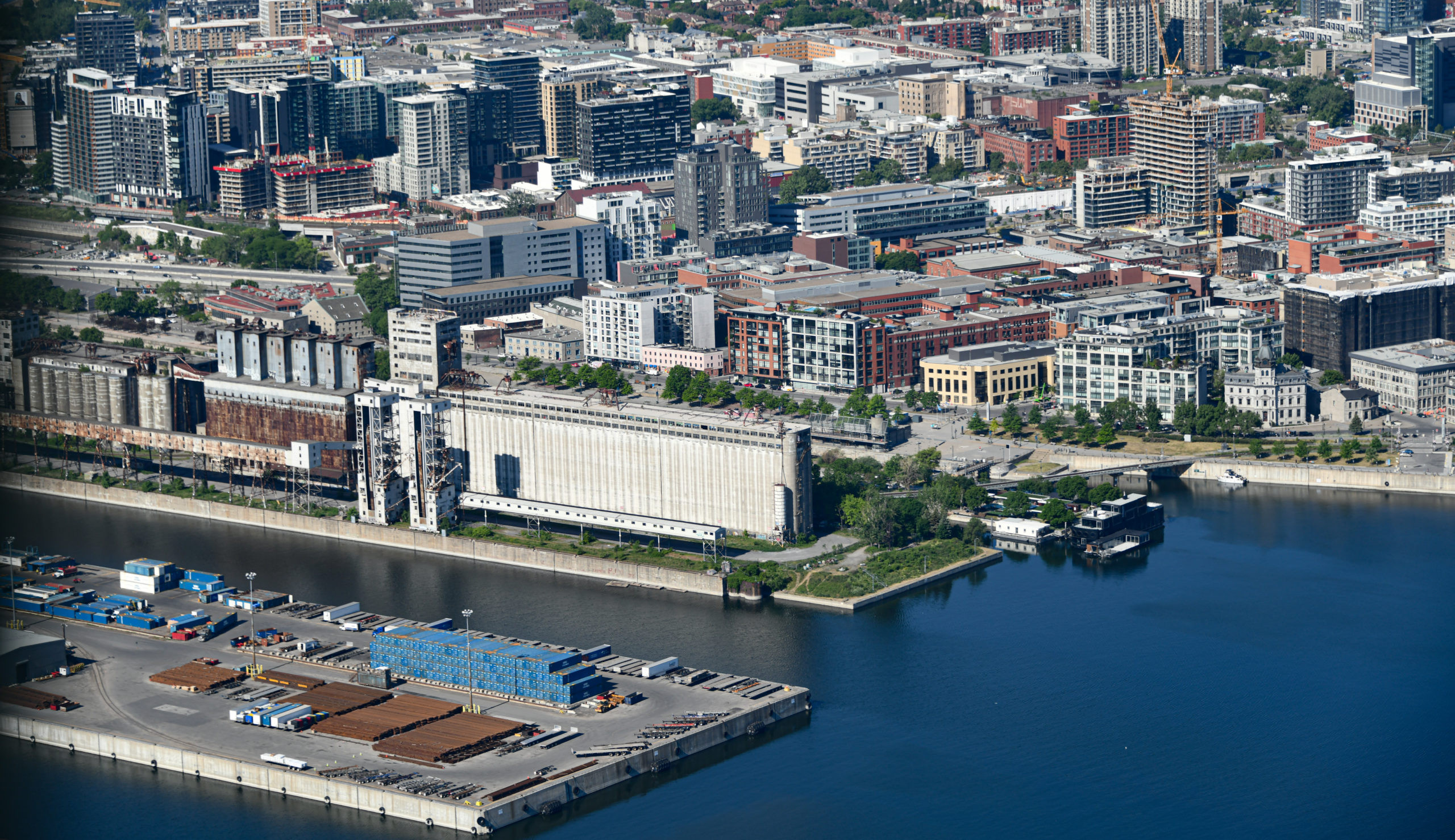Although the Canada Lands Company (CLC) held a public consultation and preliminary documents were revised in 2018, the master plan has still not been published. Nevertheless, in the wake of the 2022 election campaign, funding of $50 million was granted for work on the Old Port site.
In 2019, a call for proposals was launched for the redevelopment of the Pointe-du-Moulin / Silo No. 5 sector. The CLC has still not released the official results of the call for proposals, although the winning group was authorized to comment publicly on the project.
While awaiting the implementation of this master plan, various recreational-commercial installations continue to clutter the landscape and detract from the remarkable ensemble formed by the riverfront of Old Montréal and the entrance to the Lachine Canal. Particularly regrettable are the presence of the zipline park facing the landmark Bonsecours Market, the Grande Roue, and the planned observation tower in front of the Pointe-à-Callière Museum which is expected to open to the public in 2023.
In 2024, it was announced that the Old Port revitalization plan, developed in 2017, would not be carried out for budgetary reasons. An alternative plan will be developed in the coming years to reconsider financing options.
Pointe-du-Moulin, for its part, is included in the revitalization plan for the Bridge-Bonaventure sector. In collaboration with the federal government, the City of Montréal plans to transform this former industrial district into a mixed residential and commercial neighborhood that includes affordable and social housing. This project was the subject of a public consultation led by the OCPM in 2019.
Following this consultation, a development master plan was prepared and then submitted to a second public consultation in 2023, before being adopted in 2025. The protection and enhancement of built and landscape heritage are among the five major priorities for the sector’s future development.
The restoration and rehabilitation of heritage buildings, such as Silo No. 5, has been identified as a priority. However, the redevelopment of this building falls under the responsibility of the Canada Lands Company, which in 2022 began steps to establish an urban farm there. According to Noovo Info, as of 2025 this project is currently stalled due to negotiations between the developer Devimco, responsible for the development of Pointe-du-Moulin, the City of Montréal, and the CLC regarding the number of housing units to be integrated into the sector.



